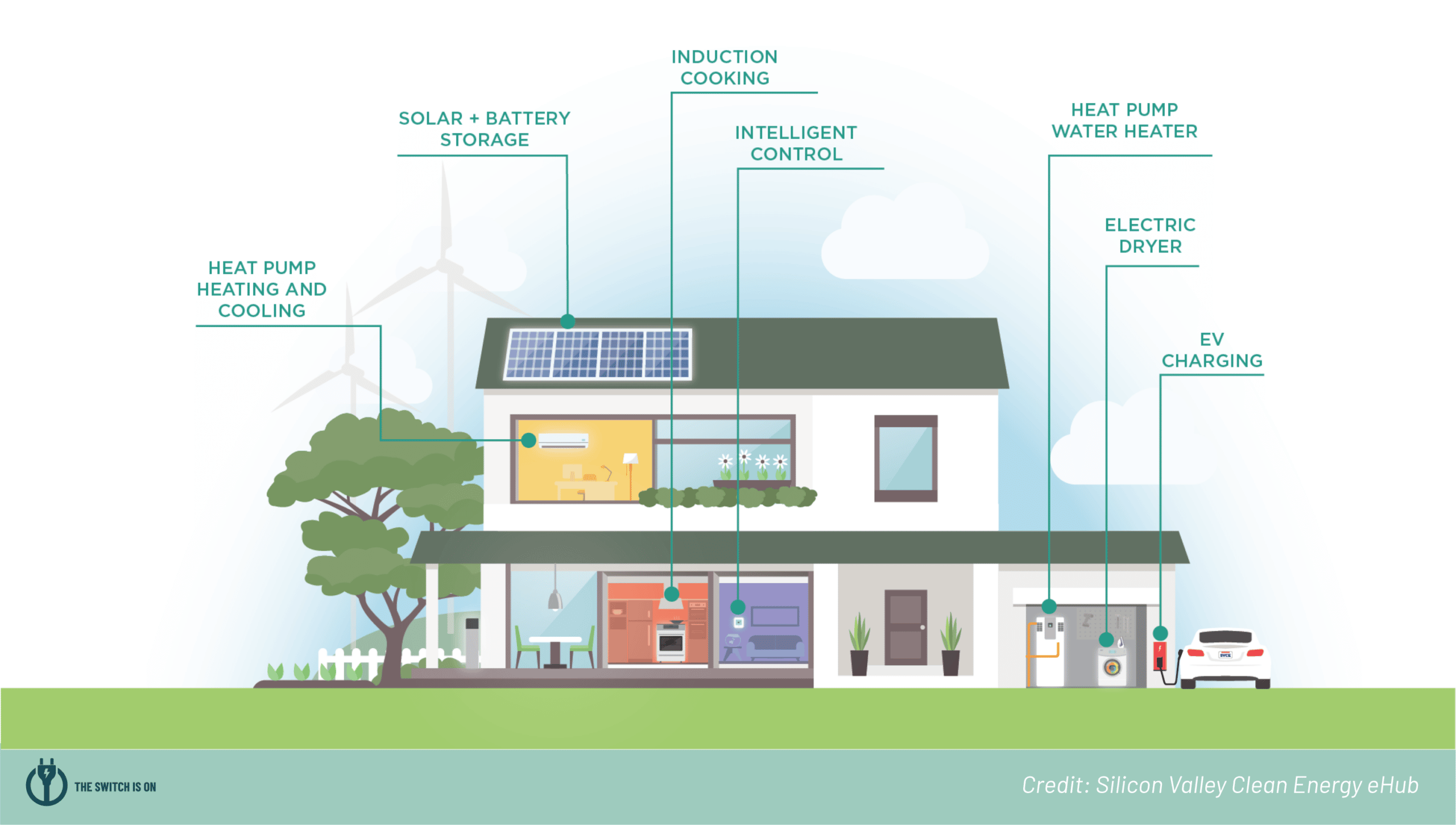Electrification Is One Piece of the Puzzle
Additional technologies can maximize the sustainability, resilience and savings of your clean energy investment.

Solar Panels
If you’re a homeowner with good sun access, you can be a part of California’s clean energy transition while increasing your own self-reliance.
Solar panels, sometimes referred to as PV or photovoltaic panels, are flat sheets of cells that collect solar energy when they are hit with sunlight. These cells transform heat energy from the sun into electricity, which is directly connected to your electric panel and can be used to power your home.
Most homes with solar panels are also connected to the electric grid to ensure the lights don’t go out at night or when the sun isn’t shining. If your solar panels produce more electricity than you need, the excess power can flow back onto the grid for a credit to your bill, which is called net energy metering.
Learn how to get started with solar.
Battery Storage
What happens to your solar system when the sun isn’t shining? While you can rely on the grid to meet your energy needs when it’s dark, connecting storage to your home solar system offers you even more energy security and increased self-reliance.
Lithium ion battery systems are the most common form of home energy storage. Depending on their size and shape, they can be placed in a basement, a garage, or even against a wall, and work similarly to ordinary rechargeable batteries.
These systems can:
- Keep homes powered during outages (similar to a generator)
- Store clean solar energy to be used in the evenings or during times of low sunlight
- Offset energy consumption during times of peak usage
- Help increase the stability of the grid by providing electricity when more of it is needed and acting as a place for electricity to go when too much is being produced
Learn more about adding battery storage to your electric home.
Electric Panels
All homes have electric panels, also known as breaker boxes, or load centers. It is where the electricity is delivered into a home, and dispersed to where it needs to be used. Each circuit breaker in the electric panel controls the electricity in a specific electrical circuit in the home, and has a maximum amount of energy that can flow through it.
When switching a gas powered appliance for an electric-powered appliance, or when installing equipment like vehicle chargers, the home needs to be able to provide more electricity than it did previously. This could mean the panel needs to be modified or upgraded. We recommend consulting a contractor to understand the options available.
New technologies, such as smart panels, are emerging that provide enhanced data and control of the way power moves in the home. There are also specialty switches that can toggle a breaker between two electricity uses that don’t typically overlap, sending power to either an EV charger OR an induction stove, for example.

